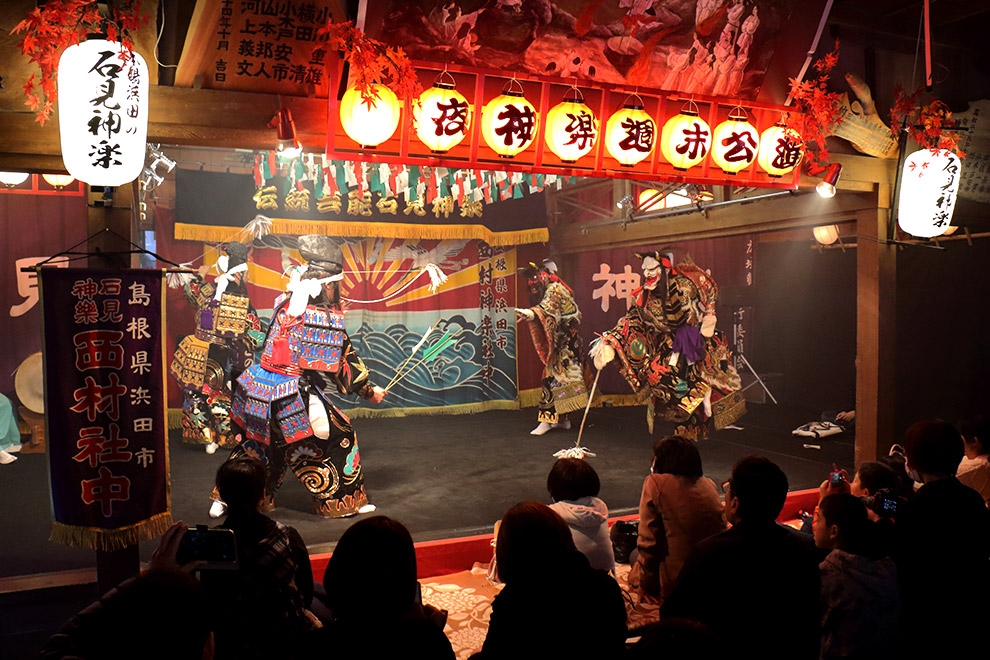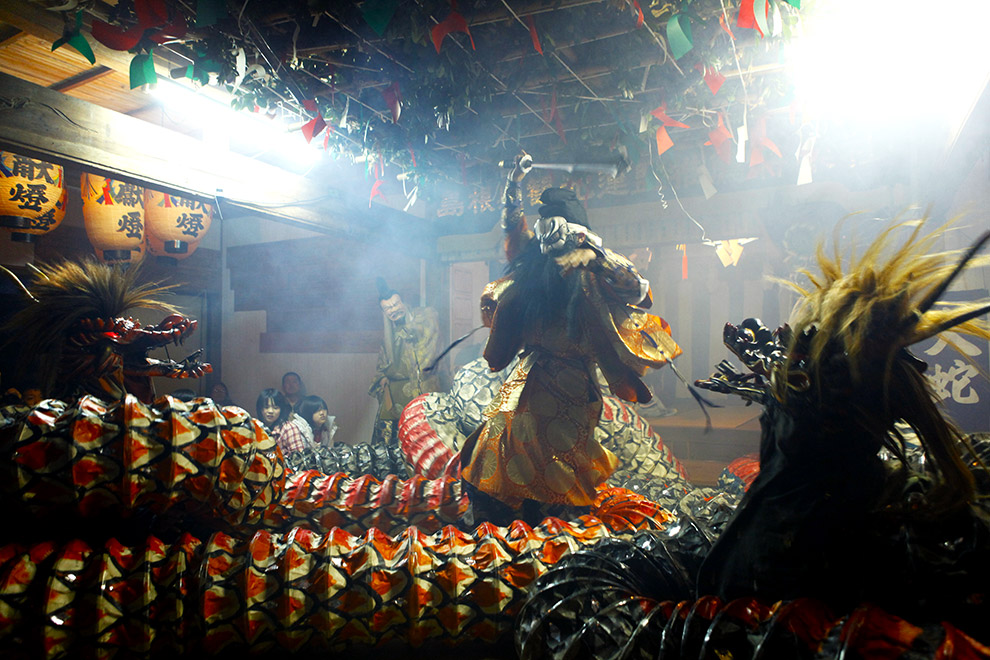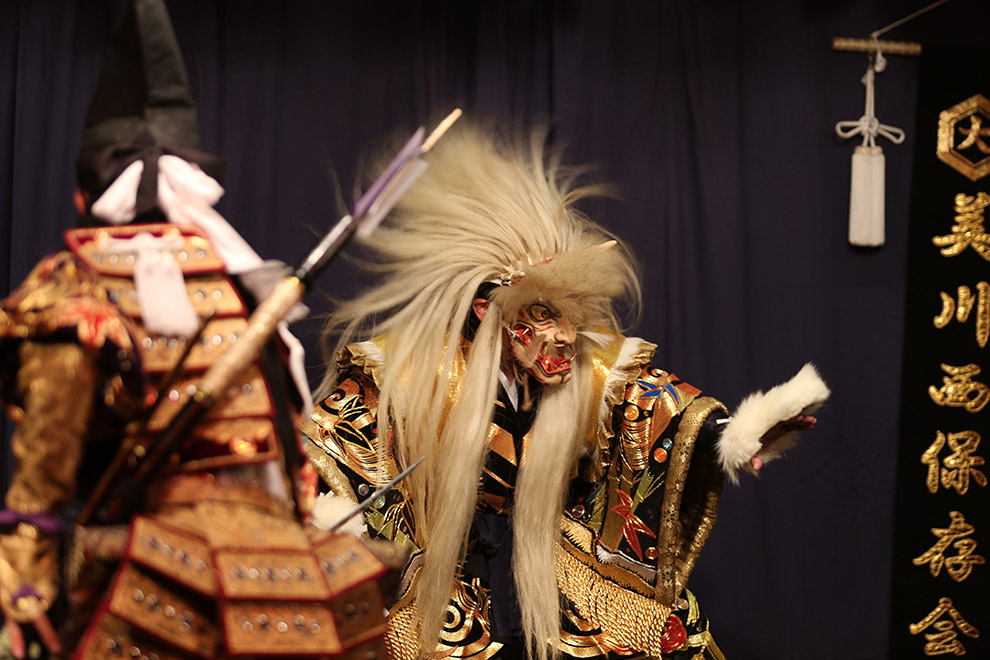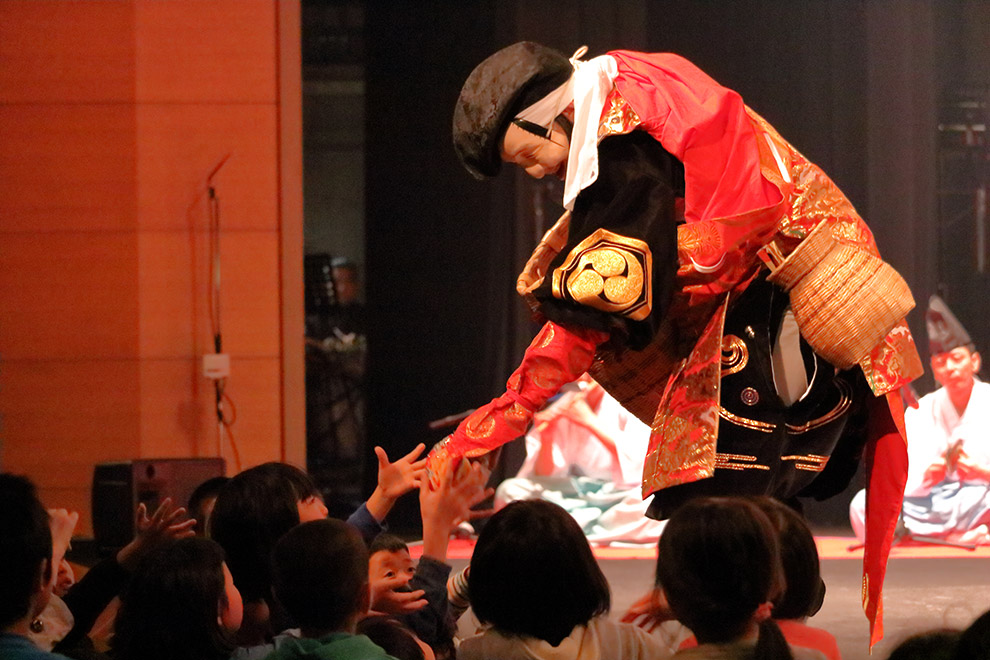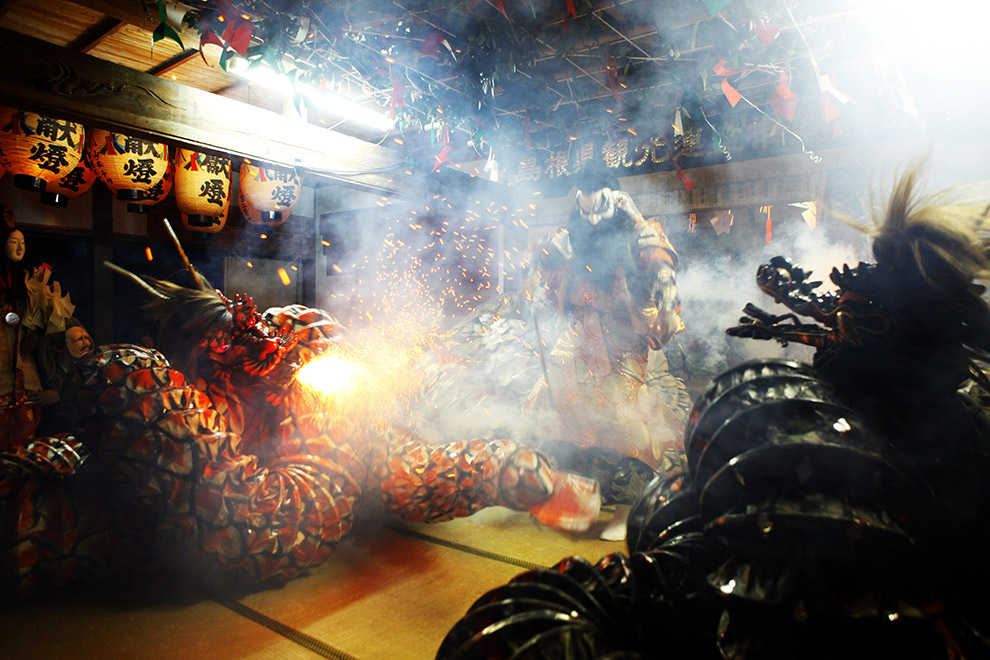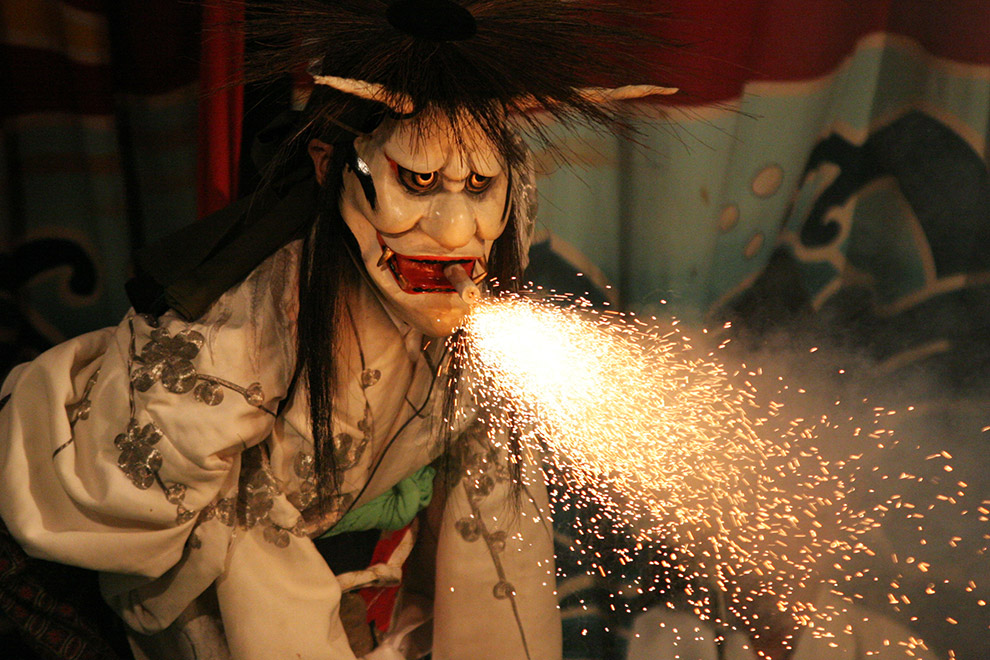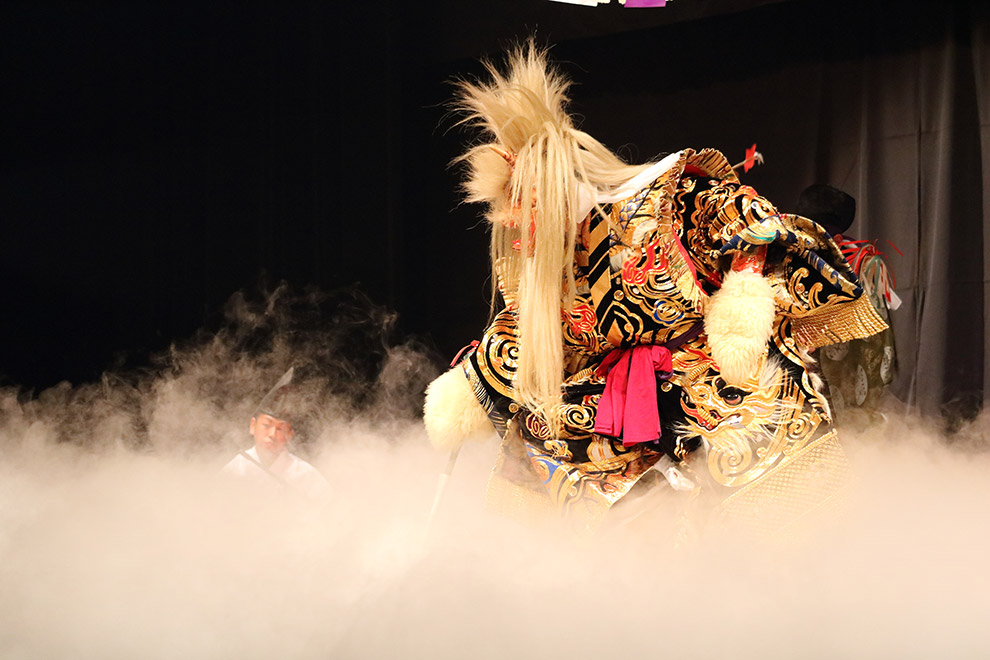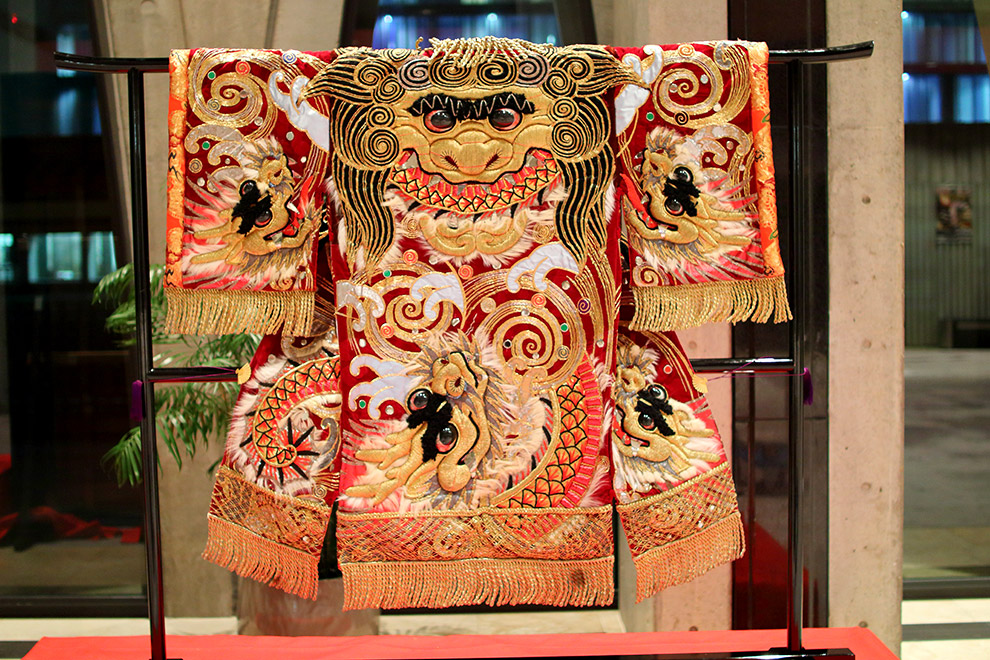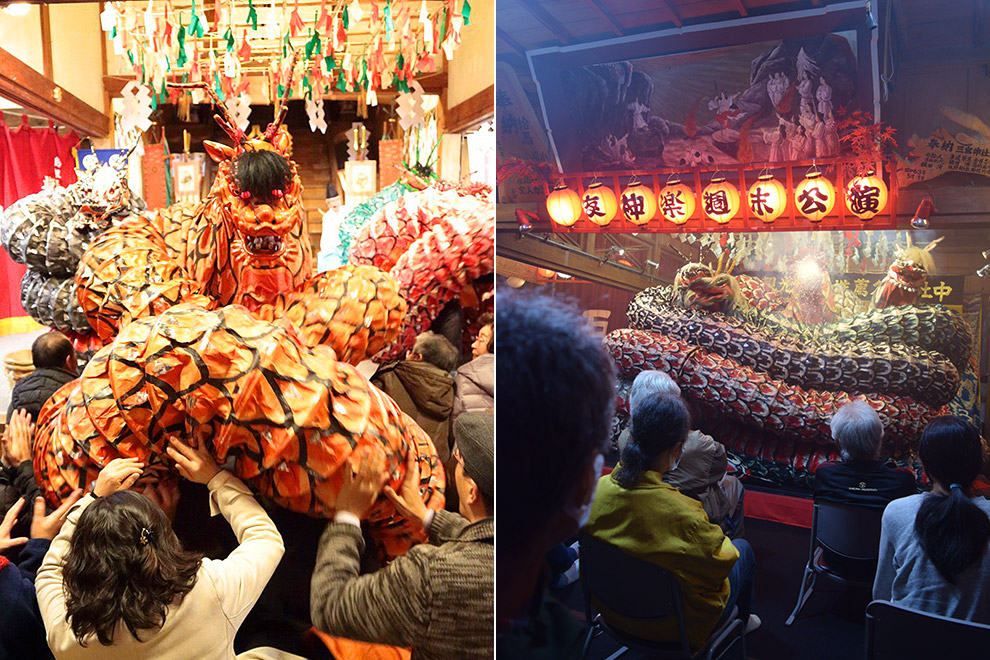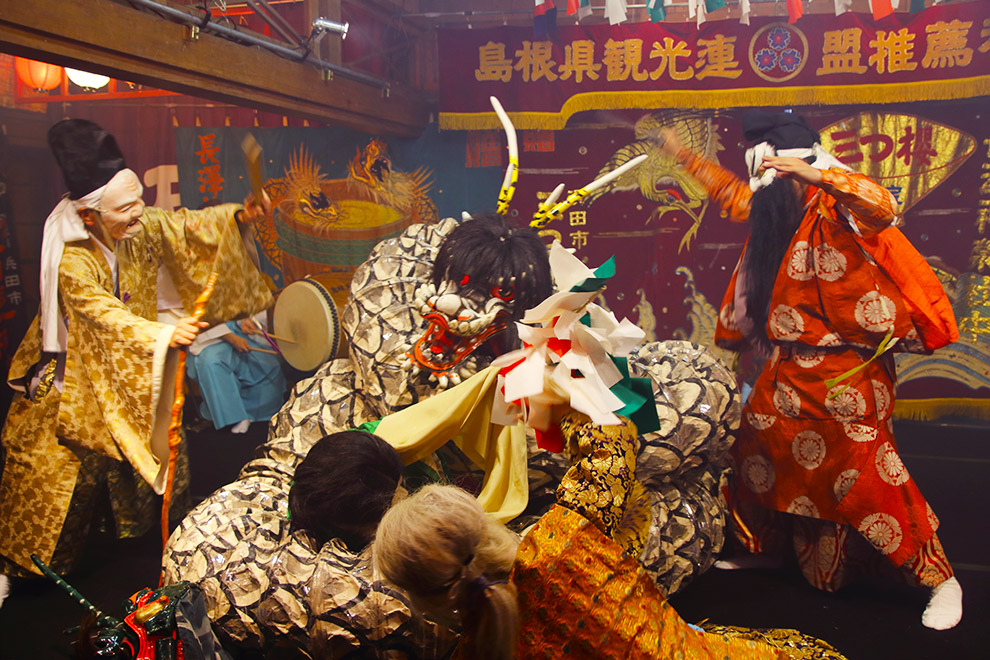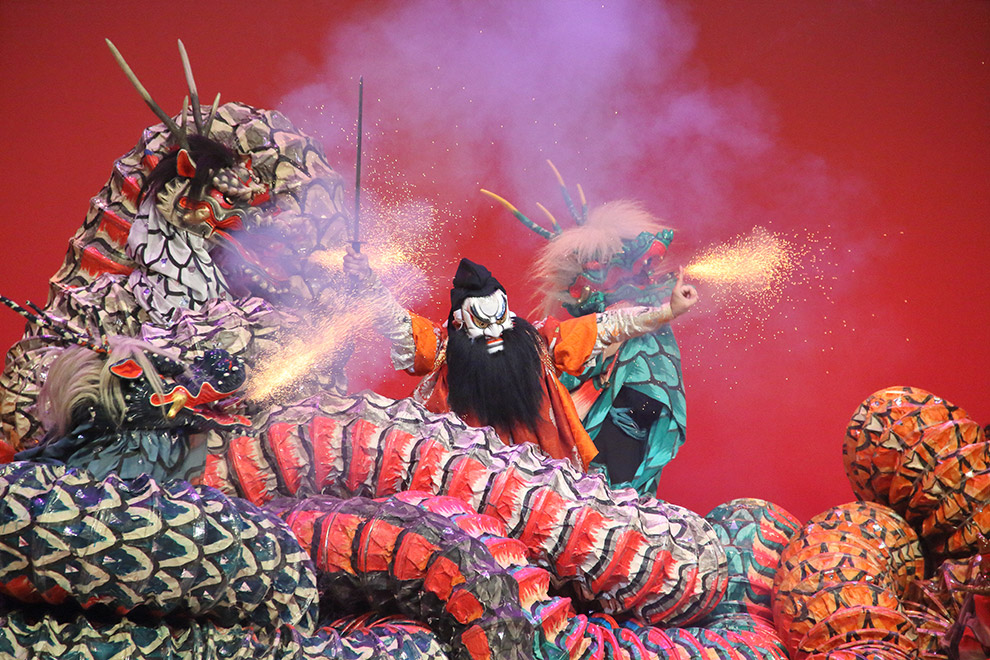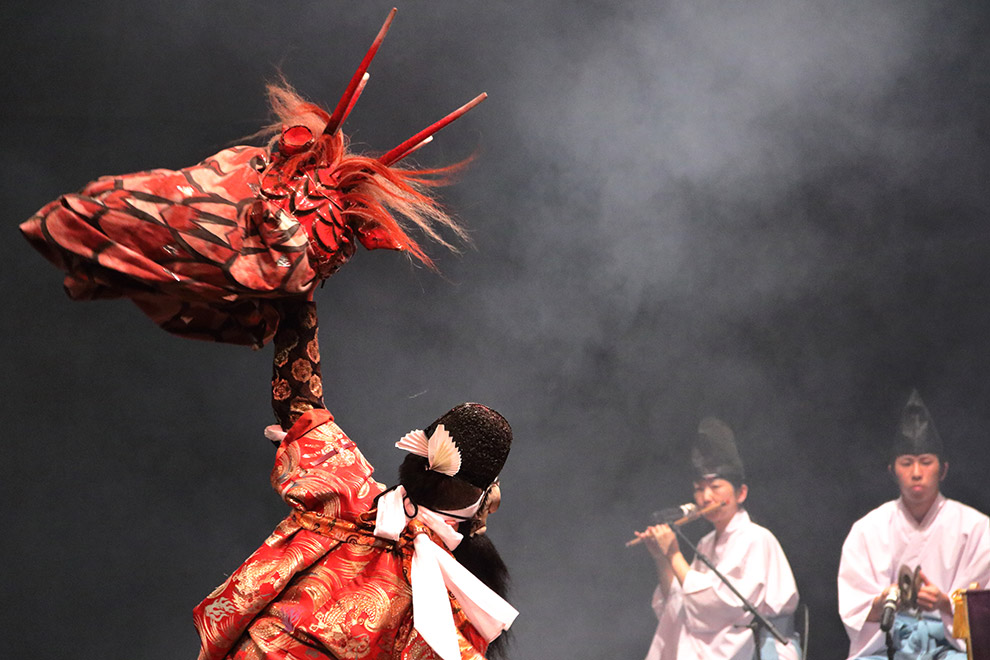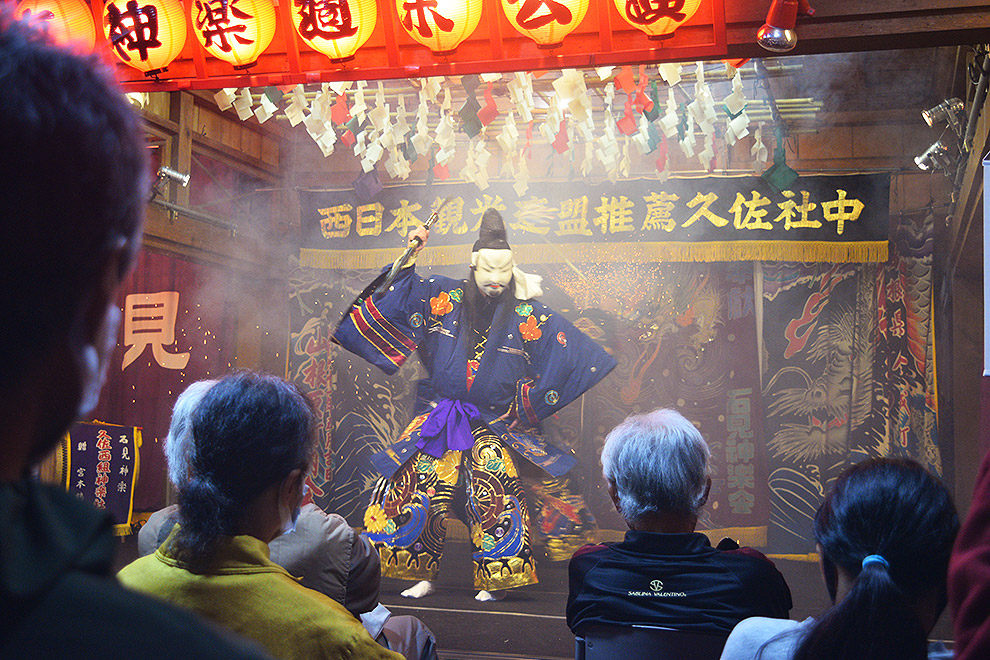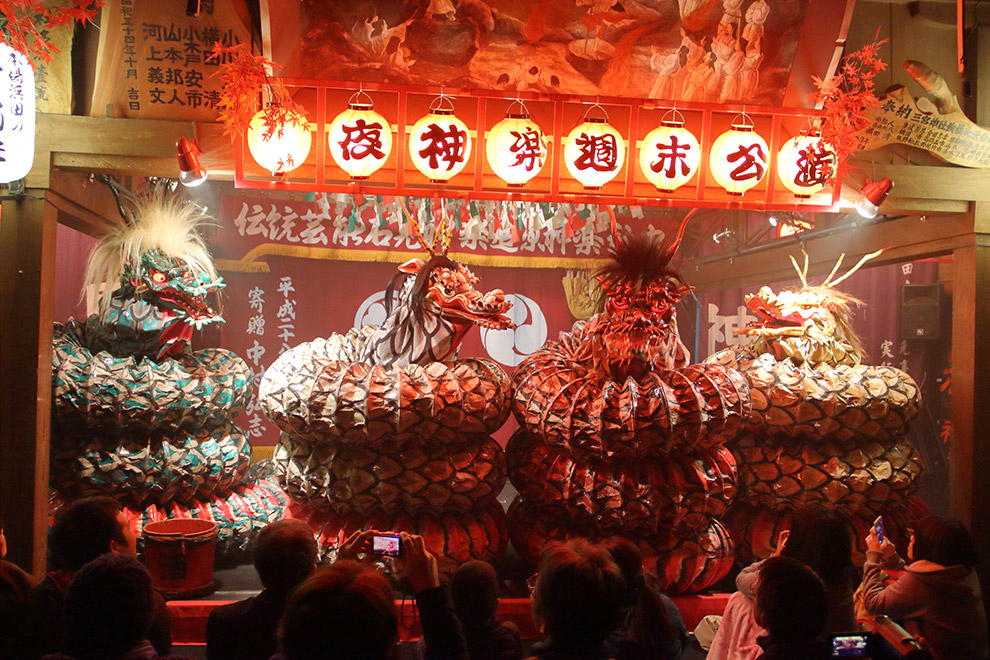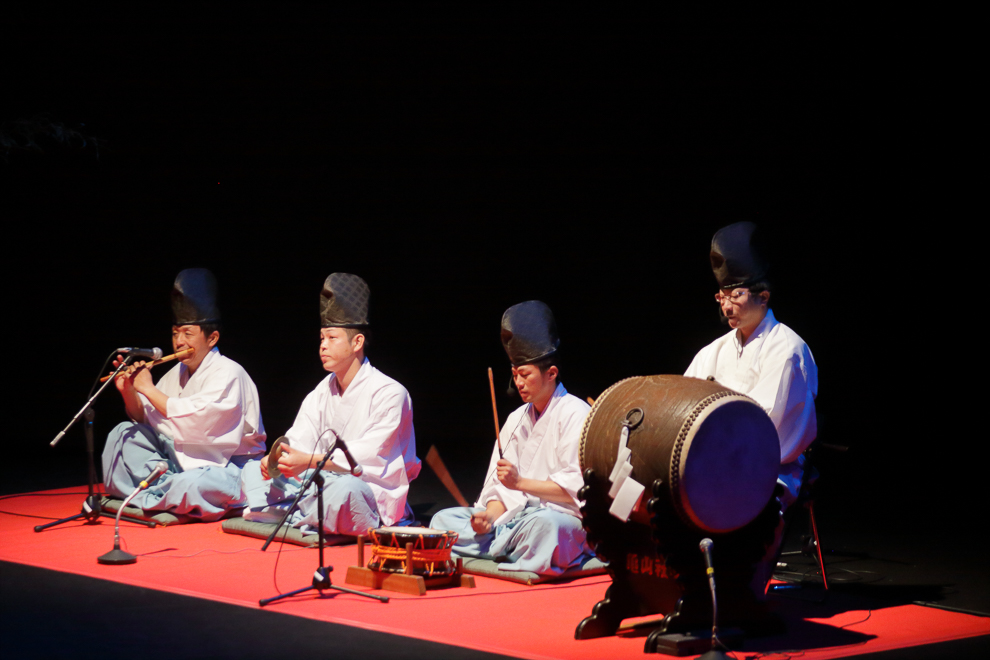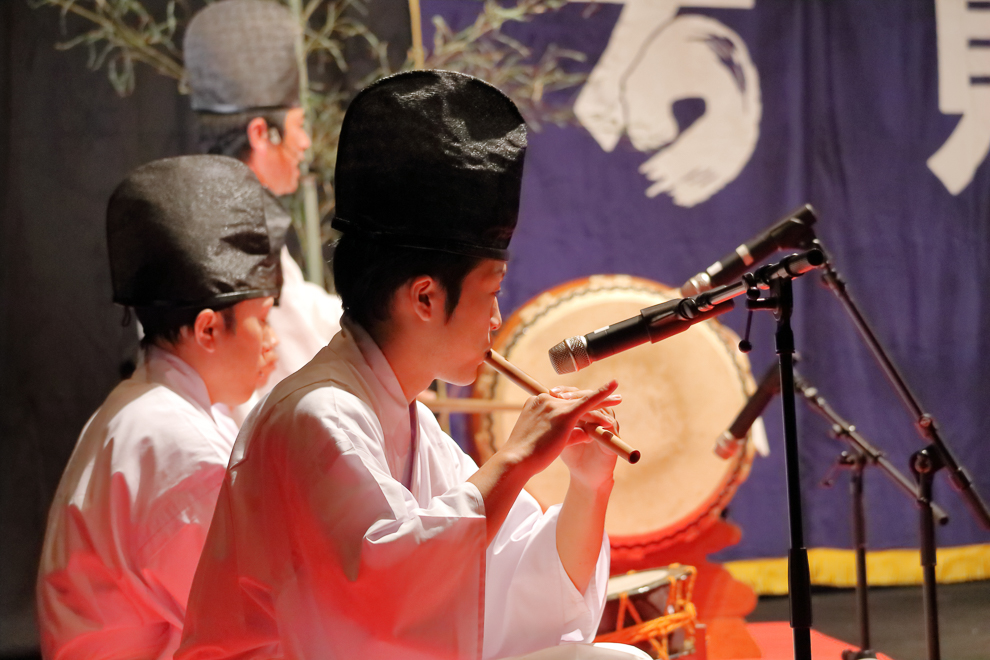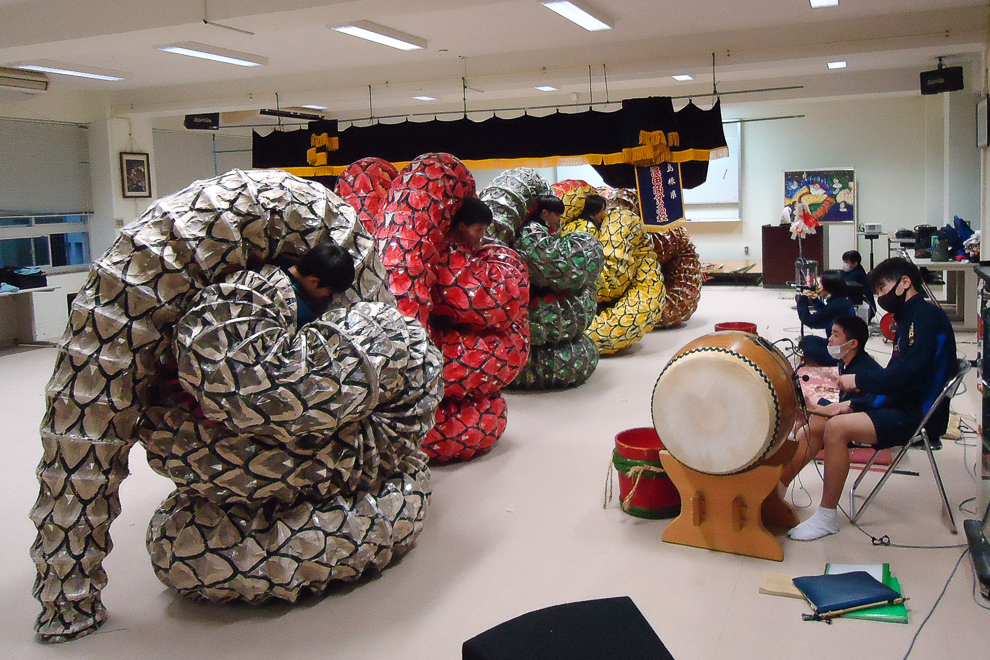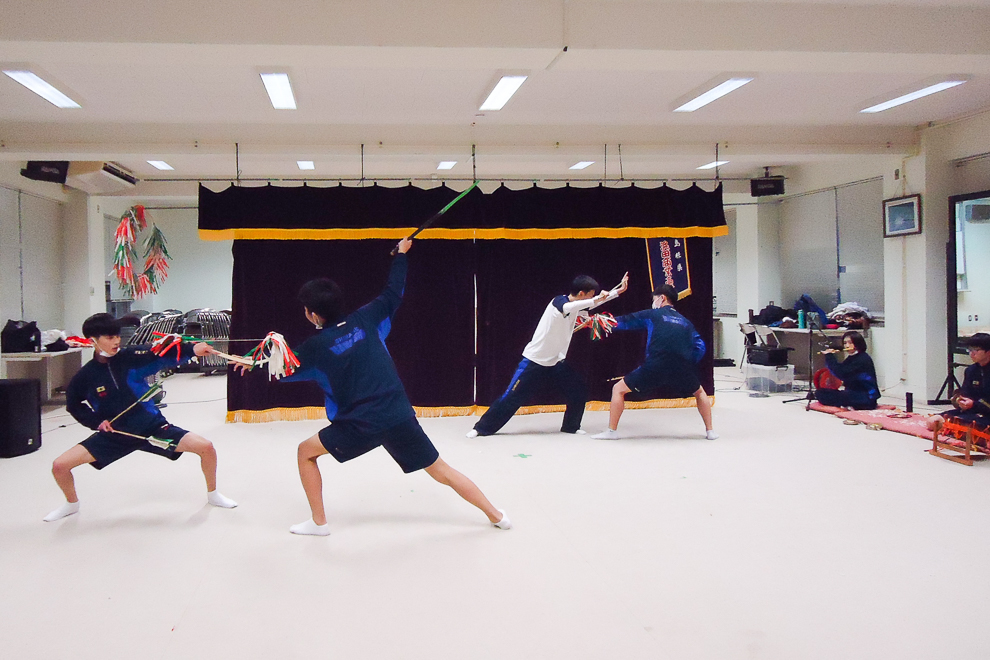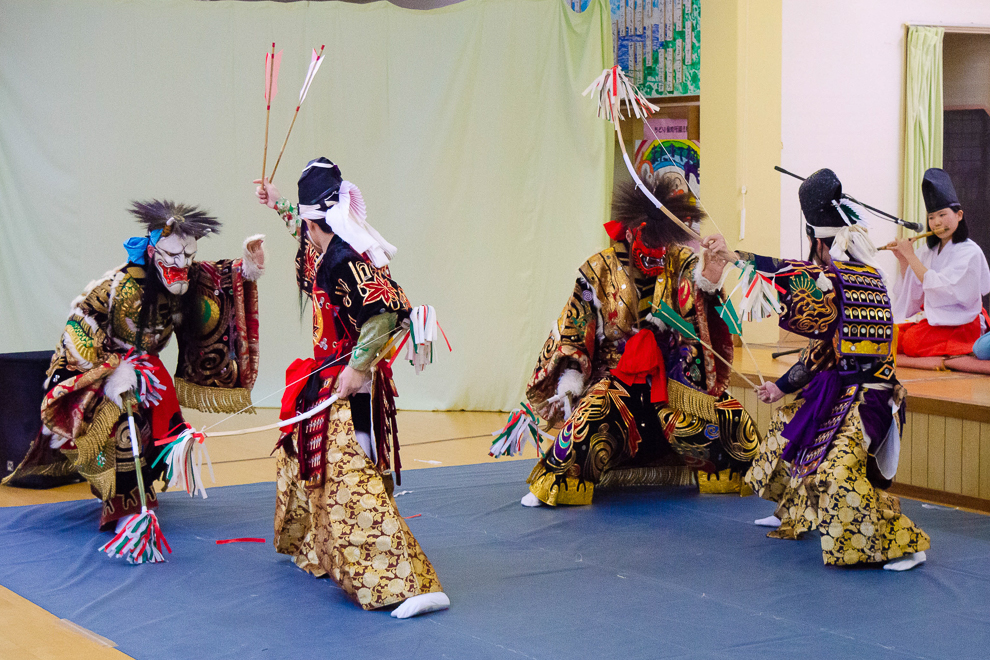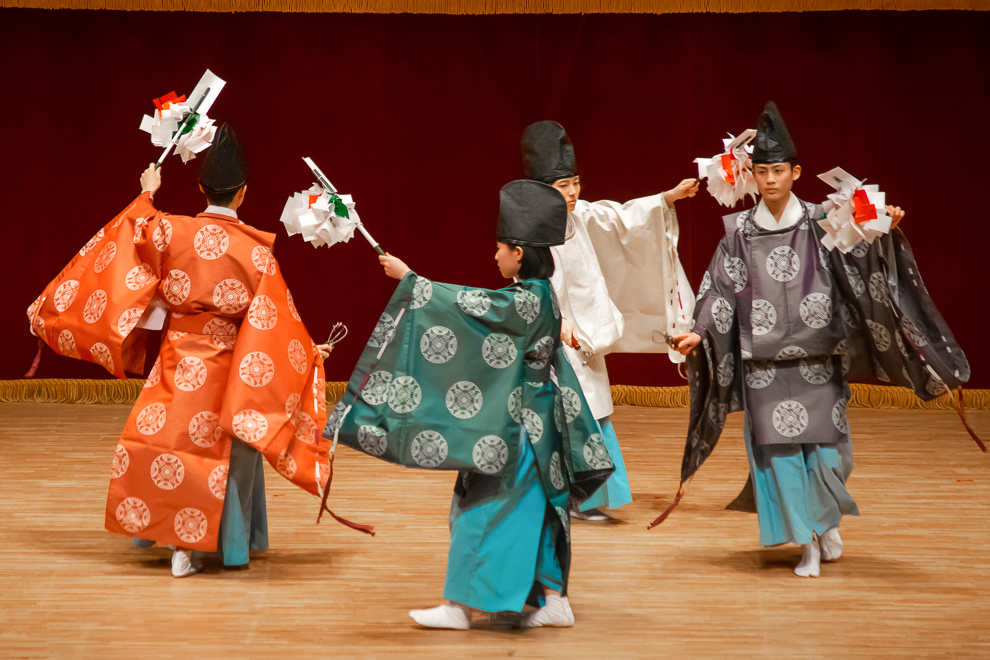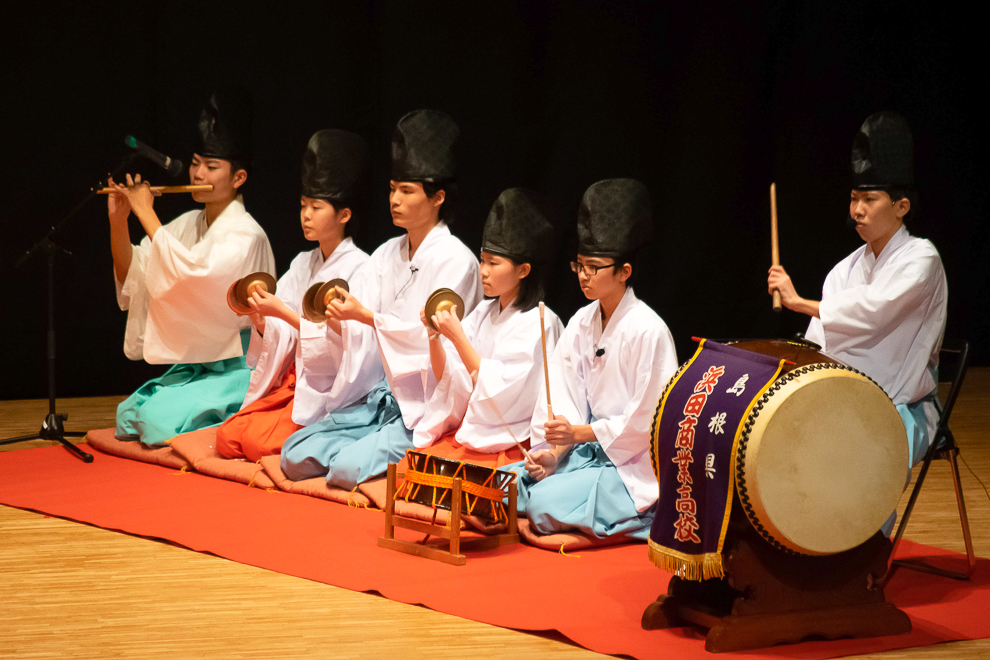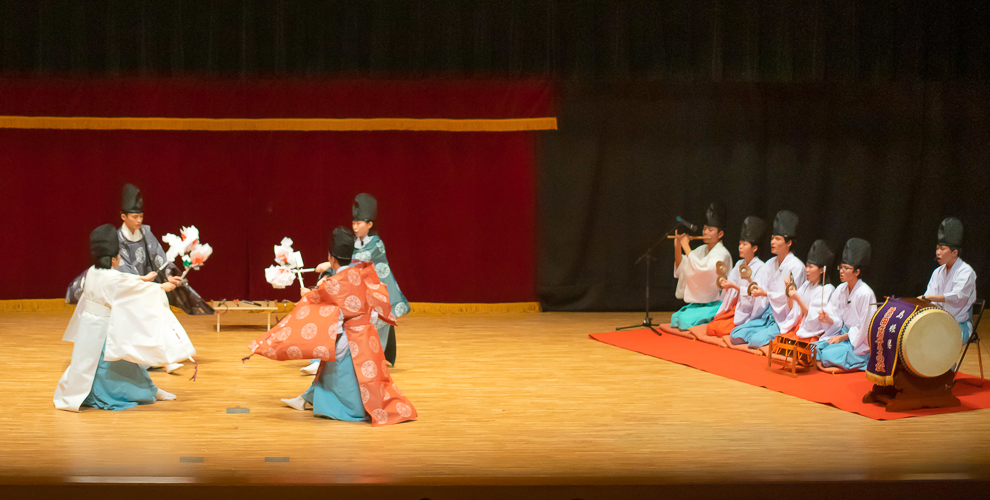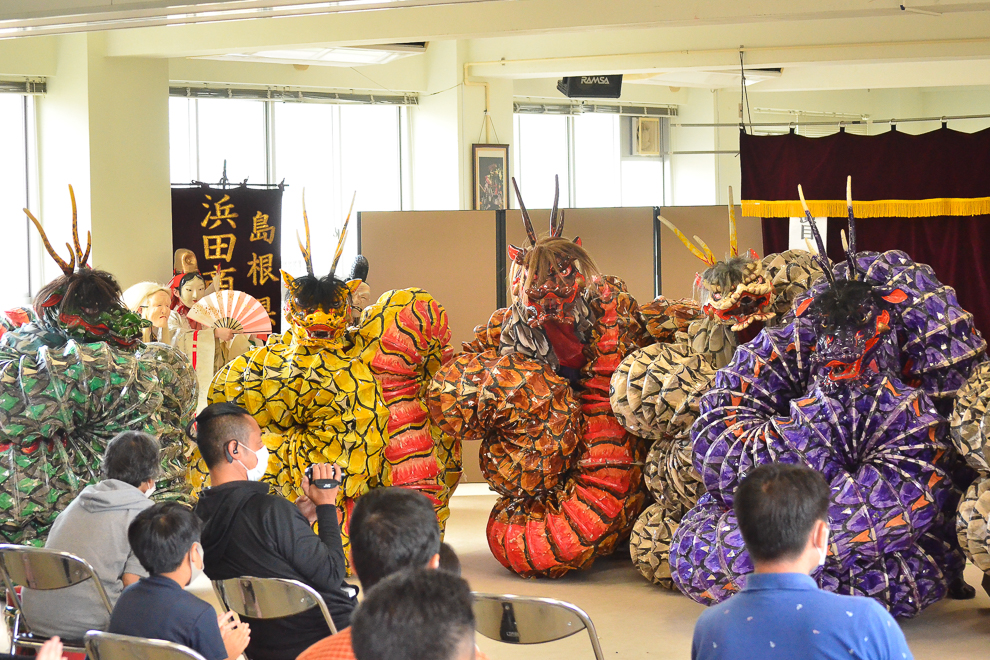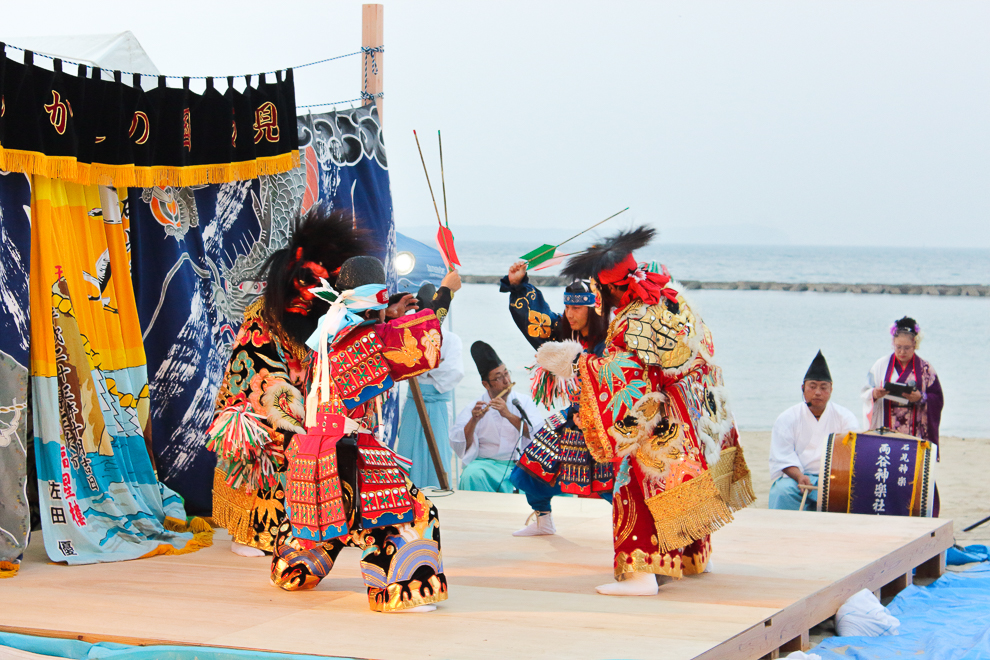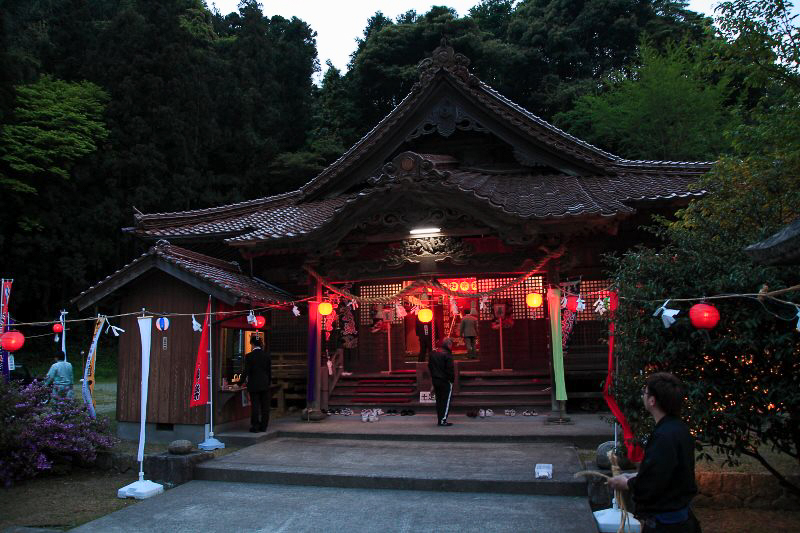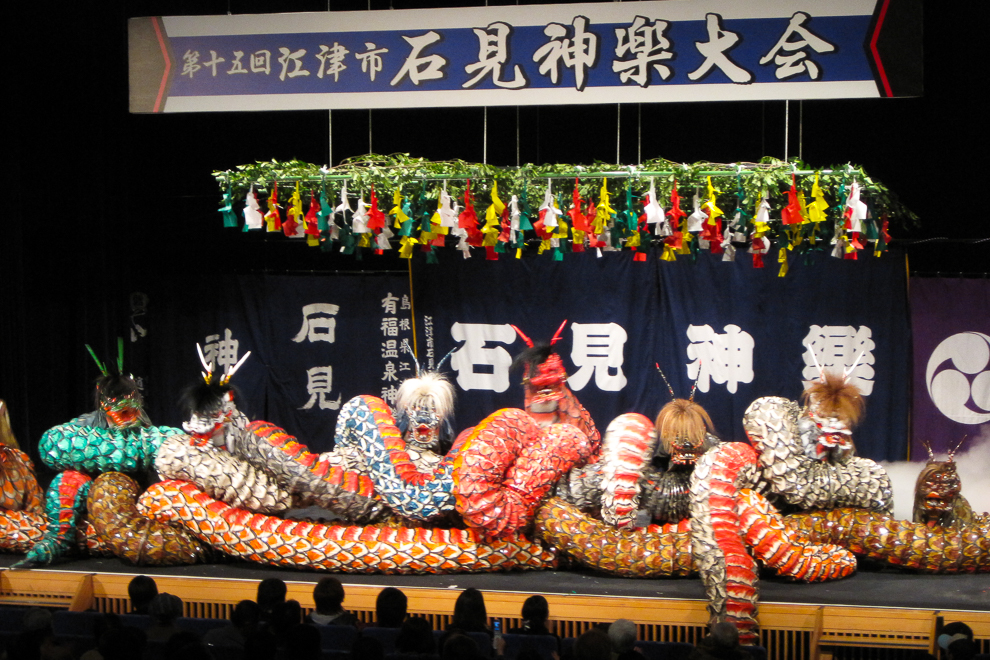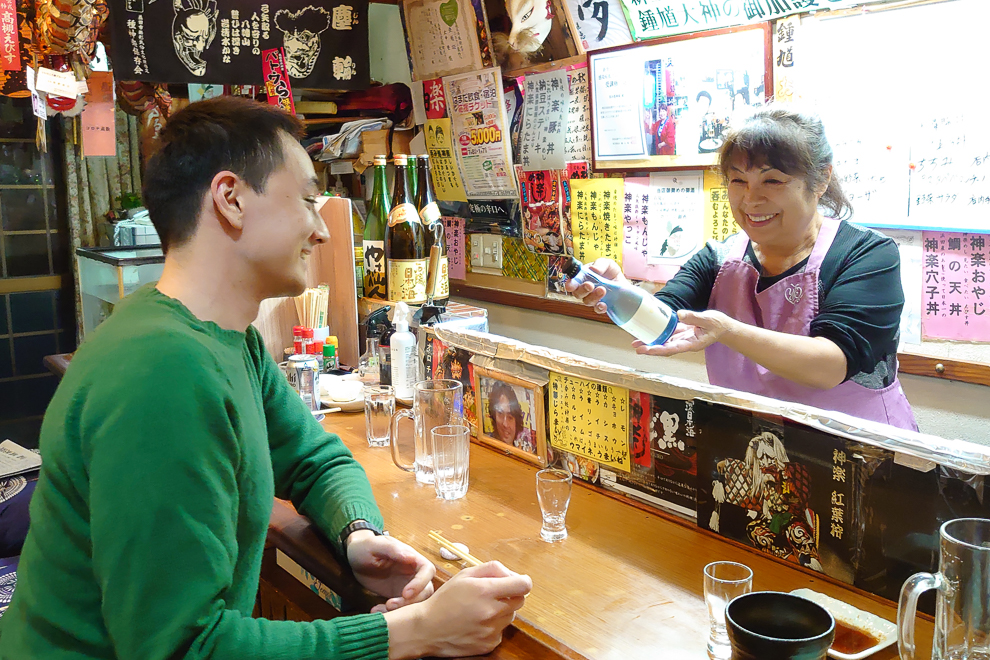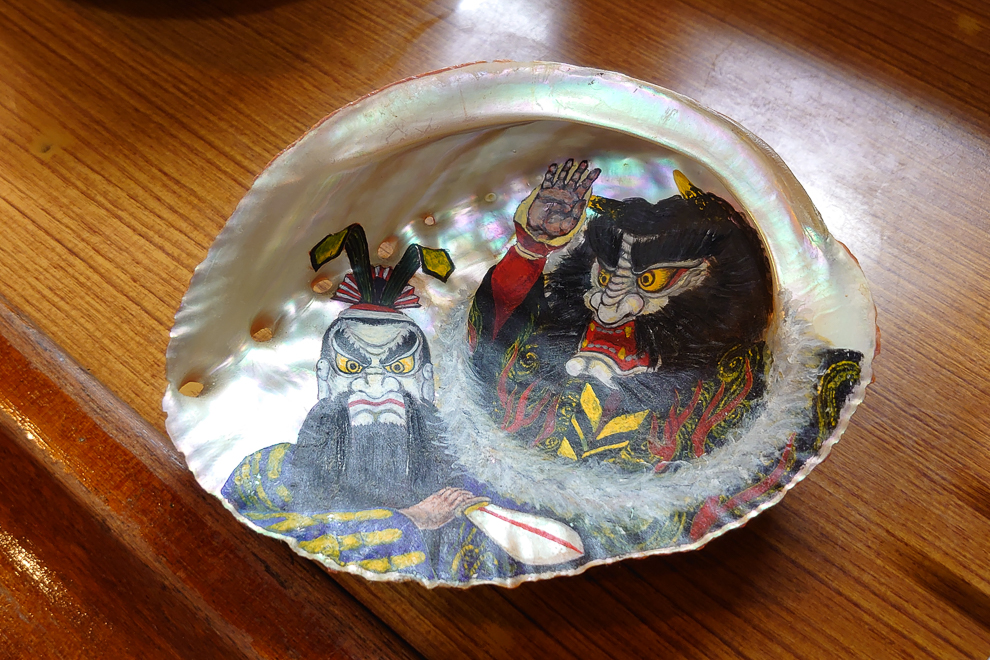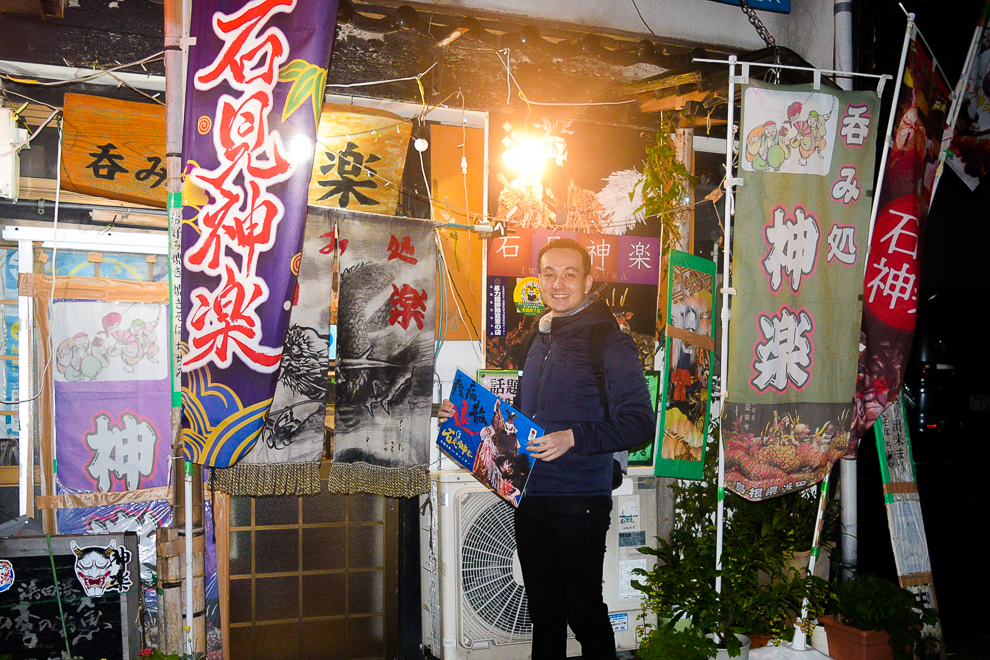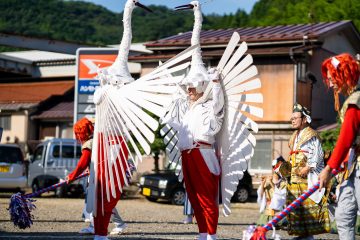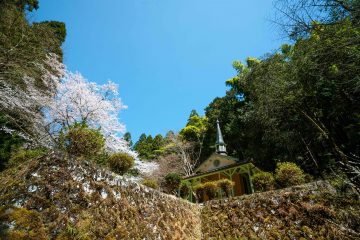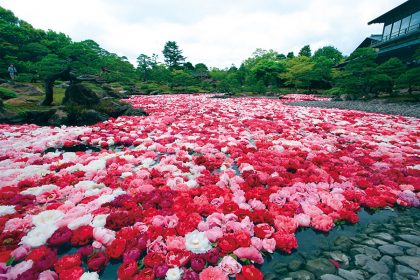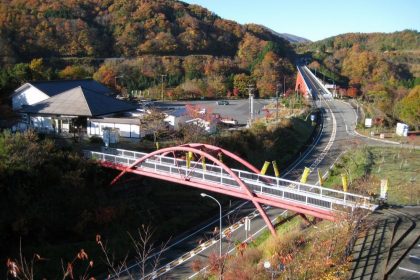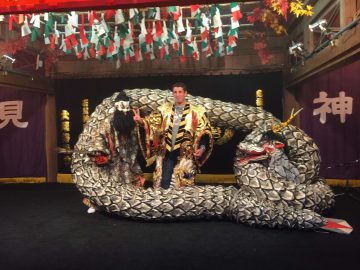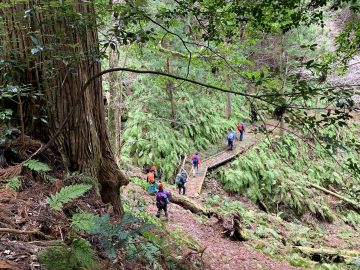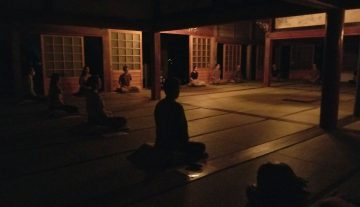Iwami Kagura – Living Tradition
Experience the unique spectacle that is Iwami Kagura, both a treasured tradition and a beloved part of everyday life.
The Iwami region in Shimane Prefecture is home to an ancient ritual imbued with the vibrant spirit of the local community. Experience the unique spectacle that is Iwami Kagura, both a treasured tradition and a beloved part of everyday life.
Popular Culture and Proud Tradition
Iwami Kagura is a form of kagura from the Iwami region, in western Shimane. Kagura began as a religious ritual, usually involving song and dance, performed in dedication to Shinto gods. Each ritual also tells a story, usually from Japanese mythology. Many regions of Japan have their own forms of kagura but Iwami Kagura really stands apart.
Unlike other variations of kagura or even traditional theater, which can seem inaccessible or exclusive, Iwami Kagura has evolved with the times, incorporating elements like pyrotechnics and smoke machines. There’s also nothing stuffy about the dramatic dancing, riveting musical accompaniment and flamboyant costumes. Performances are mostly held at local shrines, usually for 1,000 yen or less. It’s also normal to enjoy a beer or a snack in many venues (yes, even shrines). As a result, Iwami Kagura is firmly embedded in local, everyday culture.
Unlike other variations of kagura or even traditional theater, which can seem inaccessible or exclusive, Iwami Kagura has evolved with the times, incorporating elements like pyrotechnics and smoke machines. There’s also nothing stuffy about the dramatic dancing, riveting musical accompaniment and flamboyant costumes. Performances are mostly held at local shrines, usually for 1,000 yen or less. It’s also normal to enjoy a beer or a snack in many venues (yes, even shrines). As a result, Iwami Kagura is firmly embedded in local, everyday culture.
Up Close and Personal
I went to Sanku Shrine in Hamada to take in a performance of Orochi, probably the most popular Iwami Kagura tale. Essentially, the deity Susano-no-mikoto rescues Princess Inada from Yamata-no-Orochi, an eight-headed serpent, by tricking the beast into getting drunk and slaying it.
The first thing that struck me was how close the audience was to the performers, with the stage barely raised off the ground and the front row less than a foot away. The intimate setting added to the already vivid and powerful performance, especially when there are four outstretched serpent heads towering over you. Even without understanding the words being sung, the visually stunning presentation will tell you the whole story.
The first thing that struck me was how close the audience was to the performers, with the stage barely raised off the ground and the front row less than a foot away. The intimate setting added to the already vivid and powerful performance, especially when there are four outstretched serpent heads towering over you. Even without understanding the words being sung, the visually stunning presentation will tell you the whole story.
Mesmerizing Musical Accompaniment
Equally powerful and absorbing was the musical accompaniment with its pounding rhythm, enchanting melodies and hypnotic singing. The music is usually complemented by animated whistling and cheering from the crowd, but this was understandably subdued when I went, as a precaution against COVID-19.
Compared to other types of kagura, Iwami Kagura is known for its fast pace and driving beat, being performed in the rokuchoshi (six-beat) or hachichoshi (eight-beat) styles, and this particular performance was in hachichoshi, the faster of the two. The instruments played are typically Japanese six-hole flutes, cymbals, and small and large taiko drums. Impressively, the person who plays the large drum also does the singing.
Compared to other types of kagura, Iwami Kagura is known for its fast pace and driving beat, being performed in the rokuchoshi (six-beat) or hachichoshi (eight-beat) styles, and this particular performance was in hachichoshi, the faster of the two. The instruments played are typically Japanese six-hole flutes, cymbals, and small and large taiko drums. Impressively, the person who plays the large drum also does the singing.
By the People, for the People
Amazingly, all Iwami Kagura performers and musicians are – for lack of a better word – amateurs. They train and perform while working regular jobs, as a labor of love. For many, Iwami Kagura has been part of their lives for as long as they remember. One performer even told me there was kagura equipment among the playthings in his kindergarten.
While many traditional arts struggle to take root with younger generations, that’s not the case with Iwami Kagura. The local Hamada Business High School even has an Iwami Kagura club. The members practice day and night, and give around 30 performances a year, with a repertoire of around 10 tales. Their signature is Iwato, the story of how the sun goddess Amaterasu retreated into a cave and was lured back out by the singing and dancing of the other gods. In fact, this legend is said to be the genesis of kagura.
While many traditional arts struggle to take root with younger generations, that’s not the case with Iwami Kagura. The local Hamada Business High School even has an Iwami Kagura club. The members practice day and night, and give around 30 performances a year, with a repertoire of around 10 tales. Their signature is Iwato, the story of how the sun goddess Amaterasu retreated into a cave and was lured back out by the singing and dancing of the other gods. In fact, this legend is said to be the genesis of kagura.
Attending Iwami Kagura
Performances mostly take place on weekends or weekday evenings. They are held not only at shrines, but a variety of venues, such as hotels, cultural centers, and public spaces. Some showings are even free. In normal times, you could just show up at the venue on the day of the performance and buy a ticket in cash, but because of COVID-19-related restrictions on seating capacity, you may need to make a reservation in advance. For a schedule of upcoming performances and related details, see the link below.
Down-home Hospitality
My last stop, after taking in a spectacular performance, was a quirky Iwami-Kagura-themed bar near JR Hamada Station, which – obviously not by coincidence – is called Kagura. Surrounded by kagura decorations and memorabilia, the charismatic proprietress happily served up local soul foods such as akaten, a spicy deep-fried fishcake, and enthusiastically expressed the love and pride she feels for the Iwami region. The bar – and its namesake – are a must-see, for sure.





















